The European Space Agency took in 2015 the initiative to organize a course for professionals operating in the sector of optical engineering for Space. Two types of courses are organized: one dedicated to space optics instrument design and the other space optics instrument technology. The two courses are organised alternatively, one per year. The course of 2024 is targeted to space optics technology.
The team of lecturers consists of professionals with a long standing experience in the sector. Their accessibility during the course, gives the participants a unique opportunity to deepen their knowledge with one-to-one meetings aside of the planned lectures.
The venue hosting students and lecturers gives plenty of opportunities to develop a professional network. Sharing problems and discussing solutions together is the way to build a community of space optical engineers enabling and fostering growth in the space sector as a whole.
The contracted venue is the Colonna Resort Porto Cervo, close to Olbia – Sardinia (Italy).
Keywords: course, space, optical design, freeform surfaces, aspheres, optical technologies, optical engineering, CodeV, Optical manufacturing technology, metal optics, diamond micro-machining, optical design, optical verification, grating technology, detector, polarization scrambler, slit homogenizer, stressfree optical mounting, optical communication
For registration to the course and all financial matters please follow the link:
ESA Academy Scholarship
The ESA Education Office is pleased to offer a scholarship to one student to attend the SOIDT course. The scholarship will cover the course registration fees (directly paid by ESA Education Office) and the travel and accommodation expenses for 6 nights up to a ceiling amount of 1150 EUR (to be reimbursed via a single bank transfer after the course).
To be eligible for an ESA Academy Scholarship, students must fulfil the following criteria at the time of application:
Application deadline for the ESA academy scholarship will be 29 February 2024. The application shall be sent to the organizing ESA conference bureau supported by a cv, a letter of motivation and a short outline of the master’s or PhD task. The organisation of SOIDT will make a recommendation and shortlist to ESA academy, who will select the student. When the selected student is confirmed, SOIDT organisers will inform all applicants about the outcome of the selection.
The 2024 course will present state-of-the-art technologies for space optical instruments providing an overview of new design, manufacturing and integration technologies. Besides other topics, there will be lectures on the new area of freeform design, definition, optimization, tolerancing and verification.
The course will be organised into two parallel classes with the same content.
A – Analysis Technology
Introduction to CodeV – Adrien Tozzoli
STOP Analysis – Matthias Erdmann
Straylight Correction – Matteo Taccola
B – Manufacturing Technology
Manufacturing Technologies for Space Optics – Roland Geyl
Metal Optics Technology – Matthias Beier
C – Freeform Technology
Freeform Definition, Optimization, Tolerancing and Verification – Ulrike Fuchs
Freeform Manufacturing and Metrology – Ulrike Fuchs
D – Component Technology
Grating Fabrication Technologies – Uwe Zeitner
Polarization Scrambler and Slit Homogenizer Technology – Jerome Caron
Detector Technology – Kyriaki Minoglou
E – Integration Technology
Stressfree Optical Mounting Technology – Erik Beckert
F – Optical Communication Technology
Optical Communication – principle and optical terminal design – Zoran Sodnik
G – Technology Management
Space for Creative Minds – Luca Maresi
Hands-on Activity
Design, Manufacturing and Verification of a telecentric lens – Volker Kirschner, Bernd Harnisch
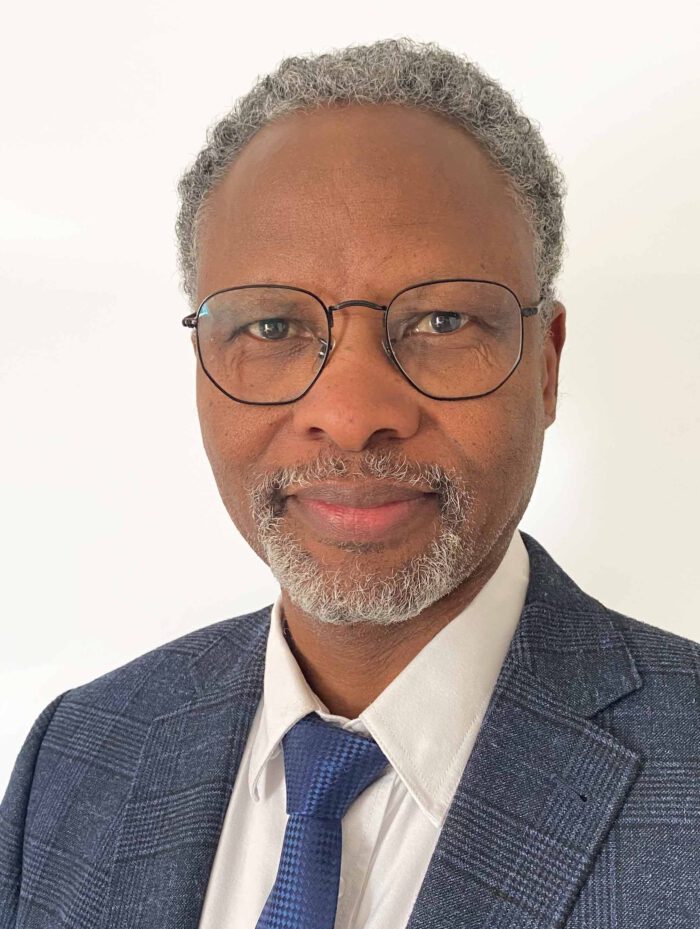
Donny M. A. Aminou
PhD Physics
>
Position: Electro-Optical Engineer, Scientist and Manager for Satellites Optical Payloads
Lecturing: Introductory Lecture for SOIDT 2024
Donny M. A. AMINOU worked in Optical components productions (polishing, coating) including optical system design and manufacturing during 5 years with Alpine Research Optics (Boulder Colorado, USA). He took a position at ESA in June 1993 starting on ENVISAT as MIPAS Performance Engineer before moving onto Meteosat Second Generation (MSG) as the SEVIRI Principal Instrument Engineer at ESA. Following the successful launch and operation of MSG-1 & 2, he took a job as the Technical Officer responsible of Meteosat Third Generation (MTG) during the design and development from phase 0 up to phase B1. From there, he became the Payload Manager of the MTG Programme during phase B1/C/D/E. Dr. Donny M. A. Aminou is a member of SPIE and of the American Meteorological Society. He is recognized as an expert on geostationary meteorological satellite systems and gives lectures on that field for Master’s degree in SpaceTech at University of Graz (Austria).
cv
From 31-12-2023 retired/pensioner
Year 2023 MTG Program Senior Advisor
2010-2022 MTG Payload Manager
2006-2010 MTG Development Technical Officer
1994-2006 MSG SEVIRI Principal Engineer
1993-1994 ENVISAT-MIPAS Performance Engineer
1988-1993 Head of R&D at Alpine Research Optics
1986-1988 Post-Doc at University of Co., Boulder
1983-1986 PhD student (High Energy UV Laser)
Lessons learned for Optical Engineering applied to EO instruments systems
Since we don’t make optics for “nice to have”, this introductory lecture will provide a high level overview of all I experienced in optical instruments, from design to manufacturing and testing up to space qualification and in flight issues. I will highlight what an instrument engineer goes through, including optical and system aspects to achieve the required performances. The lecture will address more particularly how unexpected defaults or non-conformances can harm qualification and how to get away from the burdens. For that, several examples will be provided based on real instruments development experiences and lessons-learned amongst which include,
– cryogenic optics and how to handle icing in cryogenic environment;
– Telescopes and their alignment burdens;
– Calibration units (BB, diffusers) and how to keep the standard going;
– corner-cubes specifics and narrow band filters;
– detectors and strip filters and handling sun intrusion;
– Performances (Testing, OGSE, radiometric noise, MTF, PSF…).
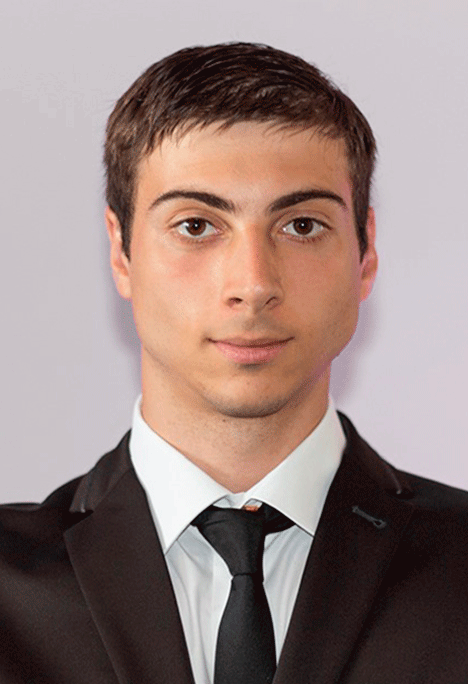
Adrien Tozzoli, MSc. Optical Engineering
>
Position at Synopsys: CodeV Application Engineer
Lecturing: Introduction to CodeV, Freeform design optimization with CodeV
Adrien Tozzoli has been working as Application Engineer at Synopsys since November 2019. As a member of the technical support team for the optical design software CODE V, he is responsible for pre-sales activities, technical support and software trainings.
Before that, Adrien used to work at Airbus Defence and Space, for about four years, as an Optical Engineer conducting stray light analyses to evaluate thermal self-emission on the MetImage project.
During Adrien’s apprenticeship at the Institut d’Optique Graduate School he worked as an optical design engineer on the development of ultra-panoramic IR low-cost imager systems.
cv
2019-present: CODE V Application Engineer at Synopsys, Germany
2016-2019: Optical Engineer at Airbus Defence and Space, Germany
2016-2016: Optical Engineer at Scoptique, Germany
2013-2015: Optical designer in apprenticeship at CSTB, France
2012-2015: Student at Institut d’Optique Graduate School (IOGS), France
Introduction to CodeV
This lecture will be a hands-on induction to CodeV optimization and tolerancing analysis features. After a short introduction to CodeV, we will discuss optimization techniques and apply them to simple optical systems (singlet, doublet). We will then cover the basic of tolerancing theory and its implementation within CodeV. Finally, we will present desensitization techniques and an inverse tolerancing example.
Freeform design optimization with CodeV
Freeform surfaces can represent an efficient solution to reduce system’s aberrations, while offering at the same time significant benefits and cost savings. In this lecture, we will briefly introduce freeforms and discuss the models available in CodeV. Then, we will do a practical example to show how freeform surfaces can be used to improve the optical performance of a telescope, as well as decrease its size.
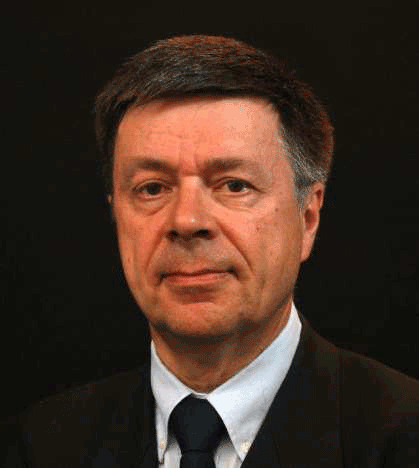
Roland Geyl, MSc. Optical Engineer
>
Position: Retired from Safran REOSC
Lecturing: Introduction to Optical Manufacturing Technologies
Roland GEYL is an Optical Engineer graduated from Paris Orsay Institute of Optics recently retired from Reosc, SAFRAN Group in France. During four decades he contributed to most of the space projects at REOSC either as lens designer, manufacturing and testing engineer, program manager, sales manager, plant director and VP Business Development. He was also member of the SAFRAN’s Emeritus Experts network on the ‘High Performance Optics’ domain. In parallel Roland Geyl ensured the Lens Design course at the Ecole Supérieure d’Optique, Paris-Orsay for 20 years and still ensure other short courses.He gave many talks during international conferences reporting the Safran REOSC activities on high performance optics for space, astronomy, laser and defense. Today Roland GEYL is independent consultant on the subject of High Performance Optics Design, Manufacturing and Testing. He is also president of the Freeform Optics – Research & Solutions (FO-RS) French association.
cv
2013 – today Reosc, France, Business development
1999 – 2012 Sagem-Reosc, France, Sales Manager & Safran Emeritus Expert in High performance optics
1981 – 1998 Reosc, France, Lens design & Engineering / Optical manufacturing & Testing/ Program management / Division Manager )
1976 – 1979 Study at Ecole Superieure d’Optique (Major of promotion)
1982 – 2002 lecturer of Lens Design course at the Ecole Supérieure d’Optique, Paris-Orsay
Manufacturing Technologies for Space Optics – Roland Geyl
We will review in this course module the subject of precision optical manufacturing for space optics. After first detailing what is a ‘good’ optical surface and doing a brief historical overview, we will present the generic optical manufacturing process and then review the various technologies dedicated to the production of quality optical surface. Glass, metal and ceramic will be addressed. Grinding-lapping-polishing is the main subject but other techniques like replication, single point diamond turning and material deposition technique will also be addressed. The typical defects of optical surfaces, their impacts and prevent/repairs actions will be reviewed to support student future real life.
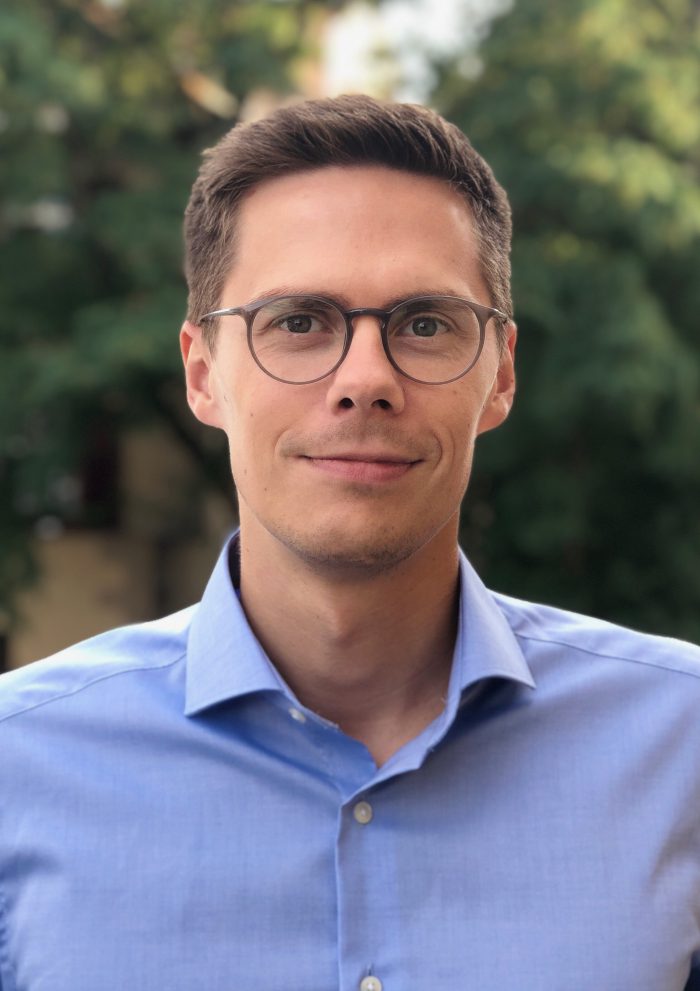
Matthias Beier
PhD Engineering
>
Position: CEO & Co-Founder at SPACEOPTIX
Lecturing: Metal Optics
Matthias graduated from Friedrich-Schiller-University Jena with a PhD in Optical Engineering, working on the development and fabrication of optical imaging systems based on metallic mirrors. After leading a research group at Fraunhofer IOF for ultra-precise fabrication and metrology processes for high-quality metal optical systems for space and astronomy, he co-founded SPACEOPTIX GmbH as a spin-off from the Fraunhofer institute in 2020 and is currently leading the company as CEO. His interests include optical manufacturing and testing technologies as well as system engineering aspects, with a special interest in freeform optical systems. He was and is currently involved in the development and realization of numerous optical systems for commercial and scientific space applications and terrestrial telescopes.
cv
2020 – today CEO and Co-Founder of Fraunhofer spin-off SPACEOPTIX
2018 – 2020 Group Leader Ultraprecision Manufacturing and Freeform Optics at Fraunhofer IOF, Jena, Germany
2017 Research Scientist on EUV Optics Manufacturing at Carl Zeiss SMT, Oberkochen, Germany
2012 – 2017 Dr.-Ing. (PhD) in Technical Physics at Friedrich-Schiller-University Jena, Germany
2010 – 2011 Studies of Precision Engineering at Universidad de Cantabria, Santander, Spain
2006 – 2012 Dipl.-Ing. in Electrical and Precision Engineering at Technical University of Dresden, Germany
Metal Optics
High-quality metallic mirrors satisfy many needs that modern space optical instruments require: high degrees of light-weighting, complex aspheric and freeform geometries at comparable low manufacturing costs and high production volume, and integrated functionalities for simplified metrology and system assembly. The lecture focuses on technologies needed to realize metal optics for applications ranging from XUV to IR and discusses the advantages and disadvantages of metallic mirror substrates within space instruments. A major emphasis is put on techniques required to realize freeform optics in metallic substrates, namely diamond micromachining and sub-aperture polishing processes, ultra-precise mechanical references and integrated metrology fiducials, and snap-together system concepts. Finally, guidelines and hints for the design and fabrication of metal optical systems will be given on the hand of past and current space missions.
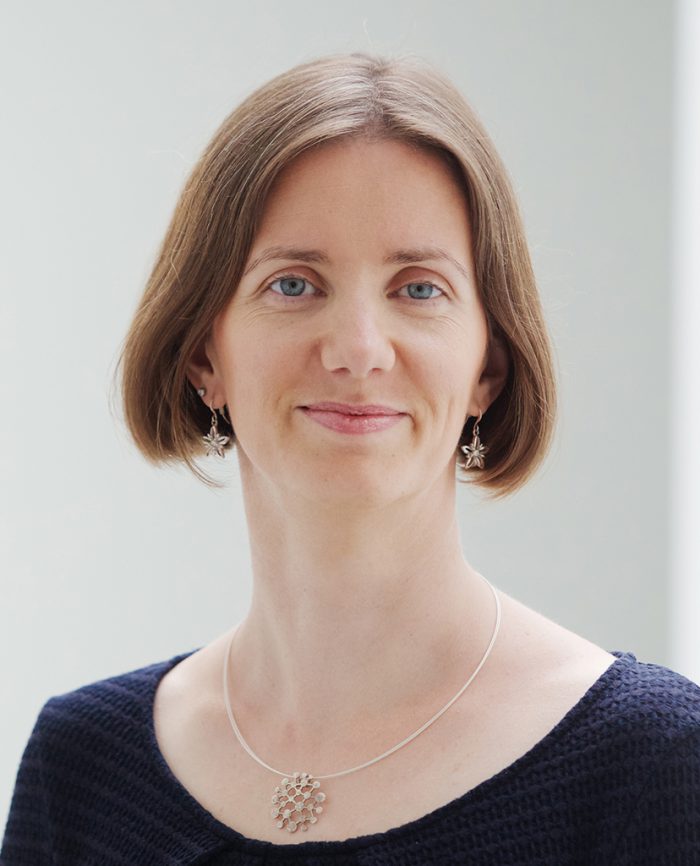
Ulrike Fuchs
PhD Physics
>
Position: Vice President Strategy & Innovation at asphericon
Lecturing: Freeform Definition, Optimization, Tolerancing and Verification
After joining asphericon in 2010 Dr. Fuchs focused early on linking manufacturing of aspherics and metrology with questions in optical design. With her team she also works on concepts that allow better prediction of system performance during optical design and tolerancing processes. Recently, great emphasis is put on transferring those ideas to freeform optics. As Vice President Strategy & Innovation she now coordinates all R&D activities at asphericon as well as strategic product development. She has already been able to register 6 patent families and is the inaugural winner of the Kevin P. Thompson Optical Design Innovator Award. Furthermore, she has been working as an Associated Editor for Optics Express since April 2018 and is the author of more than 60 publications. She holds a doctorate in physics from the Friedrich Schiller University of Jena.
cv
2023-25 OPTICA Fellow and Board member
since 2021 OPTICA Fellow
since 08/2018 Vice President Strategy & Innovation at asphericon
since 08/2012 Head of Applications Department at asphericon
06/2010 – 08/2012 Head of Optical Design Group at asphericon
since 2013 Guest Lecturer at the Ernst-Abbe-University of Applied Science Jena
11/2004 – 06/2010 Research Associate Fraunhofer IOF, Jena Germany
01/2010 – 12/2010 Assistant Lecturer at Abbe School of Photonics, FSU Jena
Freeform Optics – Design and Applications
This course will be given at two different levels. The basic level will introduce aspheric optics and their applications, giving a short introduction on freeform optics. The more advanced level will give an overview on freeform optical systems based on real world examples. Special emphasis will be on aspects as ISO 10110 and manufacturability.
Freeform Manufacturing and Metrology
This course continues with the topics of “Freeform Optics – Design and Applications ” putting great emphasis on reviewing metrology devices and correlating this with ISO 10110. Therefore, this course will also be given at two different levels.
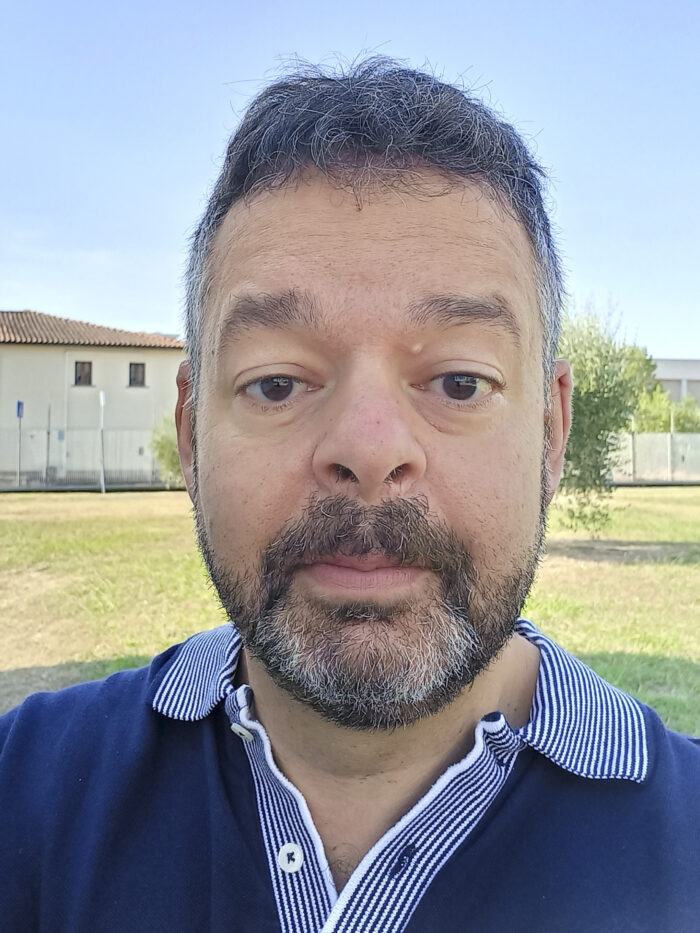
Matteo Taccola
Msc Physics
>
Position: Optical engineer
Lecturing: Straylight Correction
cv
2008 – present: ESTEC Optical engineer and Instrument engineer
2000 – 2008: Optical engineer at Officine Galileo (now Leonardo Company)
1995 – 2000: study of Physics at University of Florence
Straylight Correction
The topic of the lecture is straylight correction. Basic concepts of straylight such as ghosts and scattering will be recalled together with a discussion of effects that can be ‘easily’ corrected and effects that are not correctable.
Algorithms for correction will be discussed addressing requirements for instrument modelling and test activities, efficiency of correction and computational effort.
Examples based on actual space missions will be provided
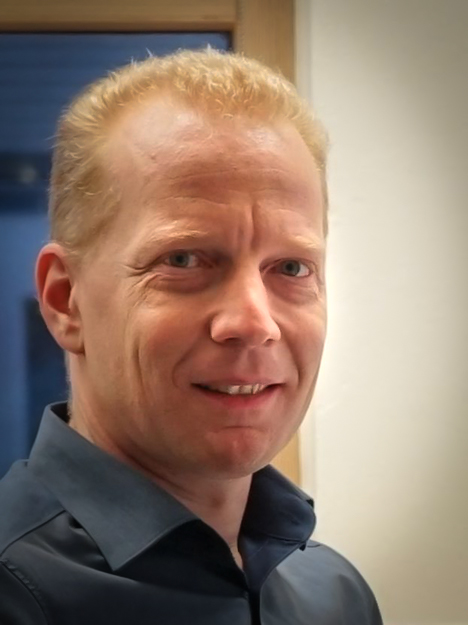
Uwe Zeitner,
PhD Physics
>
Position: Senior Director Opto-Mechanical Systems at Fraunhofer IOF, Professor for Technical Optics at Munich University of Applied Sciences
Lecturing: Grating Fabrication Technologies
cv
Worked at the Friedrich-Schiller-University Jena, Germany, in the field of fabrication of micro-optical elements and systems by e-beam lithography and resonator internal laser beam shaping. Since 1999 he is with the Fraunhofer Institute for Applied Optics and Precision Engineering (IOF), Jena, where he is currently member of the Scientific Board and responsible for space projects.
Uwe Zeitner’s field of research is the development of micro- and nano-technological solutions for optical applications enabled by fundamental research in various fields. He has a strong background in the development of high-performance gratings for applications like laser pulse compression or space-borne spectroscopy for missions like GAIA, Sentinel-4/5, FLEX, or CarbonSat.
since 2022 Professor for Technical Optics, Munich University of Applied Sciences
since 2020 Senior Director Opto-Mechanical Systems, Fraunhofer IOF Jena
2017 – 2019 Head of Micro-Optical Systems Department, Fraunhofer IOF Jena
2011 – 2016 Head of workgroup „Fabrication technologies for advanced Micro and Nano-Optics“, ZIK UltraOptics, Institute of Applied Physics, University Jena
2008 Habilitation in Experimental Physics, University Jena
2006 – 2016 Head of „Center for Advanced Micro- and Nano-Optics“, Fraunhofer IOF Jena
2004 – 2006 Head of workgroup „Fundamentals“, Fraunhofer IOF Jena
1999 PhD in Resonator internal laser beam shaping at University Jena
since 1999 Scientist at Fraunhofer IOF Jena
1995 – 1998 Scientist, Institute of Applied Physics, University Jena
1990 – 1995 study of Physics at Friedrich-Schiller-University Jena
Grating Fabrication Technologies – Uwe Zeitner
Gratings are key components in space-borne spectrometers for earth observation and scientific missions. Their optical properties determine the achievable spectral resolution and signal quality of the instrument. Based on the specific requirements of contemporary spectrometers an overview of state-of-the-art fabrication technologies for the required high-end optical gratings will be given. This includes methods like ruling, holography, and direct write lithographic structuring. Their potential and limitations for the realization of a desired grating profile and related properties like high polarization independent diffraction efficiencies and good wave-front qualities will be discussed. Special emphasis will be given to recent insights into the stray-light characteristics of gratings and related theoretical models. Different examples of gratings tailored for specific ESA space missions like GAIA, Sentinel-4/5, CarbonSat, or DESIS will be shown.
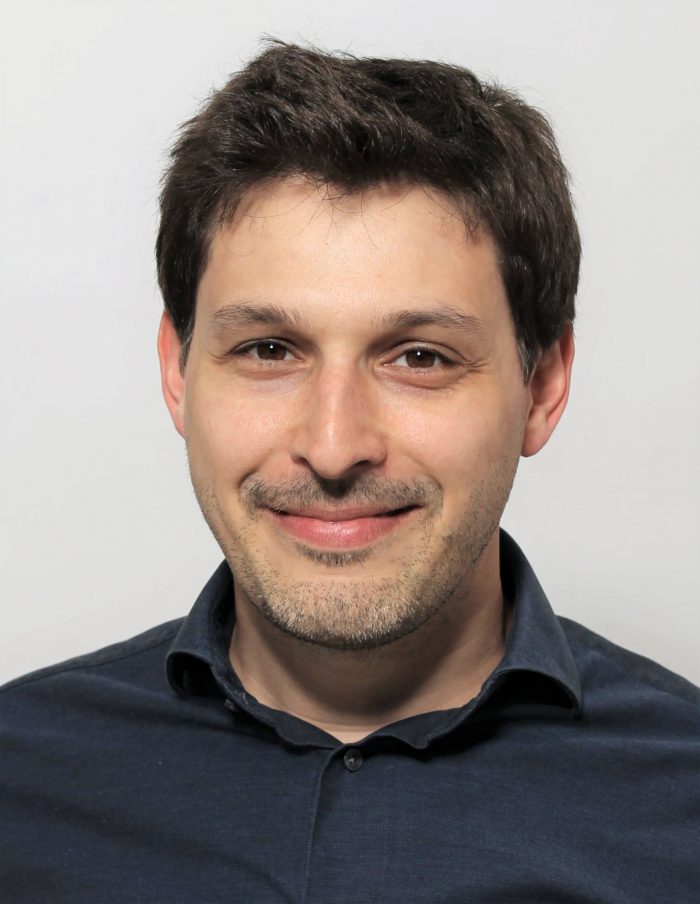
Jerome Caron, PhD Optics
>
Position: Optical designer at TNO, working on designs with freeform mirrors, pushbroom spectrometers and polarization optics
Lecturing: Polarization Scrambler and slit homogenizer technology
cv
Jerome Caron worked 9 years at the European Space Agency as consultant and optical performance engineer on instruments for future Earth observation missions. He was then involved in the preliminary phases of A-Scope, Premier, Sentinel-4, Sentinel-5, CarbonSat and Flex. At ESA he also followed and contributed to breadboarding activities on polarization scramblers, slit homogenizers, characterization and modelling of speckles from calibration diffusers.
2016-present Senior Optical designer at TNO, Netherlands
2007-2016 Optical engineer at European Space Agency
2005-2007 System engineer at Sagem Défense et Sécurité, Paris, France
2004-2005 Laser engineer at Nevada Terawatt Facility, Reno, USA
2000-2003 PhD on volume and surface scattering of polarized light at Université Pierre et Marie Curie, France
1998-2000 Engineering degree from Ecole Supérieure d’Optique
1994-1998 Master of physics, Université de Poitiers, France
Polarization Scrambler and slit homogenizer technology – Jerome Caron
Polarization scramblers are optical devices that depolarize light and alter as little as possible light propagation so that they can be used in imaging instruments. Spatial pseudo-depolarizers [1] are compact and passive scramblers with high performance that are well suited for space, and are or have been used in several spectro-imagers to make the measurements insensitive to polarization. In this course we will present their design, performance, manufacturing and testing.
[1] R.A.Chipman, J.P.McGuire, Opt. Eng. vol29 n12, pp1478-1484 (1990).
In imaging spectrometers a telescope images a ground scene onto the entrance slit of a spectrometer. Patches of clouds, snow or ground albedo variations create a non-homogeneous slit illumination that results in spectral distortions. Slit homogenizers provide an elegant hardware correction of this effect. They are promising components that have been used in particular for the Sentinel-5 ESA instrument. We will discuss their design, performance and manufacturing.
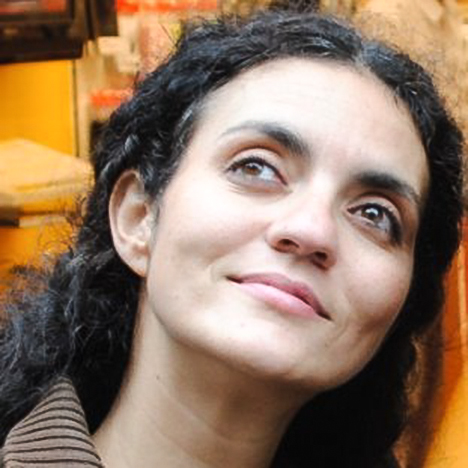
Kiriaki Minoglou, PhD Opto-electronics
>
Position: Head of Opto-electronics Section at ESA
Lecturing: Detector Technology
cv
Kyriaki Minoglou has more than 15 years’ experience in space imaging payload and detector technology development. She is the technical expert in the technology roadmap definition for Visible and Infrared Detectors for Space in ESA, leading all interactions with other Space Agencies and European Industry. As the Head of the Optoelectronics Section, she is managing the technical contributions to ESA technology developments for Earth Observation and Science Missions and is also responsible for the coordination of the R&D activities in the fields of detectors, lasers, optical communications, photonics, lidars and quantum technologies.
2020 – present Head of Optoelectronics Section
2014 – 2020 ESA-ESTEC, Opto-electronics Engineer
2007 – 2014 imec, Belgium, Detector Research Engineer
2002 – 2007 Department of Informatics, University of Athens, Greece, Ph.D in Optoelectronics
2001 – 2007 NCSR-Demokritos, Institute of Microelectronics, Athens, Greece, Research Engineer
2001 – 2007 Technological Educational Institute of Athens, Greece, Laboratory Teaching Assistant
2000 – 2002 Department of Informatics, University of Athens, Greece, M.Sc. in Microelectronics
1994 – 2000 Aristotle University of Thessaloniki, Greece, MEng. in Electrical Engineering
Detector Technology – Kyriaki Minoglou
The major objective of this lecture is to make the participants familiar with the different types of detectors that can be used in space instruments applications. Design, technology and characterization of detectors and the relevant topics will be discussed.
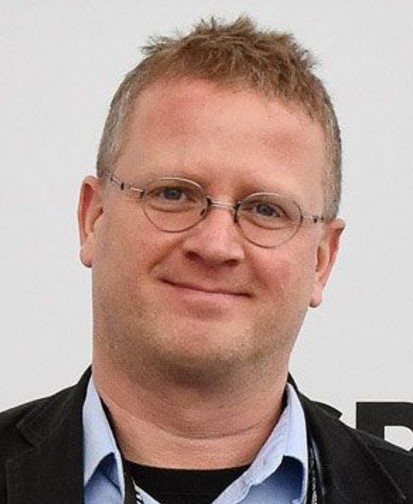
Erik Beckert, PhD Engineering
>
Position: Fraunhofer IOF Jena, Head of Department “Opto-mechatronical Components and Systems
Lecturing: Stressfree Optical Mounting Technology
Erik Beckerts works in the field of micro assembly, system integration and packaging of micro- and laser-optical systems for more than 20 years now. His experience covers components and systems such as the green laser for the EXOMARS Raman-experiment, a space-suitable entangled photon source as well as many technology studies for lens and laser bench mounting technologies.
cv
2020 – present Head of Department “Opto-mechatronical Components and Systems”, Fraunhofer IOF
2005 – 2019 Group Leader “Micro Assembly and System Integration”, Fraunhofer IOF
2005 PhD in Engineering
2001 – 2005 Engineer at Fraunhofer Institute for Applied Optics and Precision Engineering (IOF), Jena
1997 – 2001 Engineer at Institute for Microelectronic and Mechatronic Systems, Ilmenau
1992 – 1997 Study of Mechanical Engineering at Technical University, Ilmenau
Fraunhofer IOF Jena, Head of Department “Opto-mechatronical Components and Systems
Optics packaging Technologies for harsh environment – Erik Beckert
Not only the design, but also the packaging of optical systems is a key factor for highly performant and reliable, robust systems. This is of interest in particular in harsh environments, such as aviation and space, but also vacuum science and high power laser machining. Packaging of optical systems poses various challenges – different materials have to be joined together, components and their optical performance are stress and alignment sensitive, heat from active sources and conversion materials needs to be dissipated, and steep temperature gradients causing thermomechanical stress can occur. Well designed and optimized packaging and bonding technologies address these needs.
The talk will focus on bonding techniques for metallic and non-metallic, amorphous and crystalline materials, emphasizing on the development and application chain from bonding geometry design, optimization by simulation of stress and the resulting birefringent or laser-optical performance, and practical issues of processing and equipment when applying different bonding technologies. Specific technologies to be discussed are gluing, soft soldering by means of laser reflow, hydrophilic bonding and plasma assisted bonding as well as two-photon absorption based laser welding. The basics as well as design and parametrization of these techniques will be discussed, followed up by boundary conditions and restrictions. Examples will demonstrate the application of the different technologies in reality. Amongst them is the green laser for the Raman experiment of the upcoming 2020 ExoMars Mission, a nanosecond fiber laser for a space LIDAR and an entangled photon source for a satellite quantum payload.
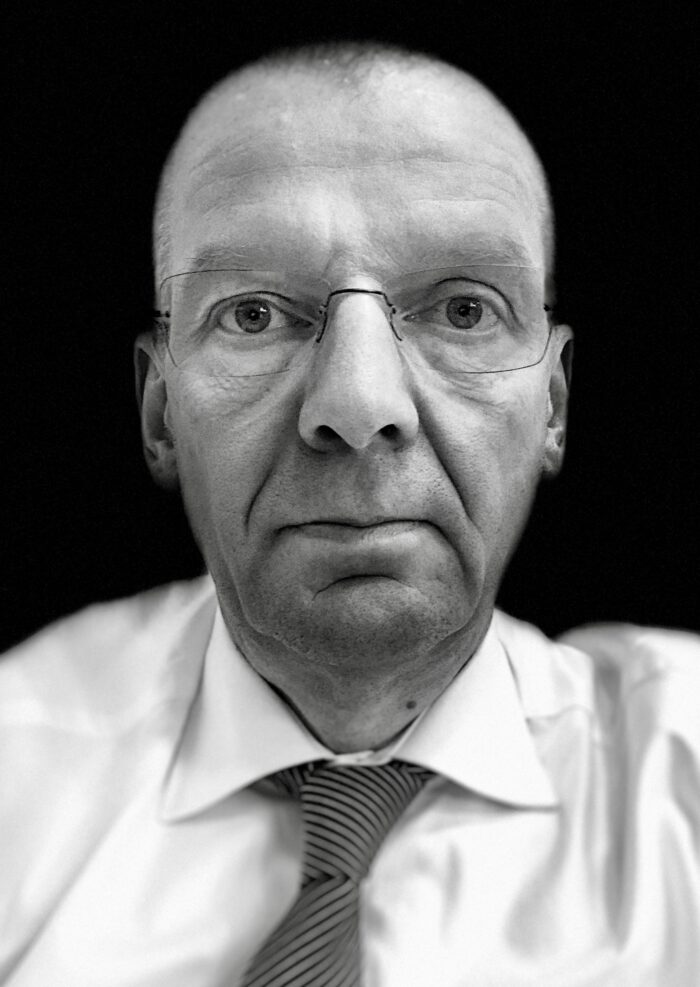
Matthias Erdmann, MSc. Optical Engineer
>
Position: Sentinel 5 Performance Engineer at ESA
Lecturing: Structural-Thermal-Optical-Performance (STOP) Analysis
cv
2014 – present Sentinel 5 Performance Engineer at ESA
2006 – 2013 GAIA Payload System Engineer at ESA
1996 – 2005 Systems Engineer Optics at Kayser-Threde (D)
1990 – 1995 Optical Designer at Steinheil Munich (D)
1990 Finalization of Optics study in Cologne
Structural-Thermal-Optical-Performance (STOP) Analysis
A STOP analysis is a multidiscipline analysis, consisting of Structural, Thermal and Optical Performance Analyses. NASA started STOP analysis around 1990 for the Hubble Space Telescope Servicing mission 4. The method is frequently used and important, for high performance optics and larger optics and telescopes, subject of gravity deformation during alignment.
The analysis is performed in two different domains: Rigid Body Domain and Flexible Body Domain. In the Rigid Body Domain optical components are considered infinite stiff. Influences of environmental effects (thermal loads, gravity, parasitic mounting forces, and mounting structure deflections) on the optical performance are analyzed by sensitivities of the optical components to tilting and shifting in the assembly. Flexible Body Domain takes in addition the deformation of optical performance into account. FEM analysis is utilized for this. Typically, in a STOP work flow, the FEM results are imported in the optical ray-tracing
model of the optics to analyze the performance impact.
The method, workflow, tools, and results are presented in detail on practical examples.
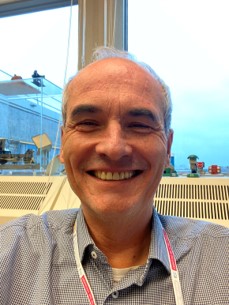
Zoran Sodnik,
PhD Engineering
>
Position: Optical communication technology manager
Lecturing: Optical communication, system design and operations
Zoran Sodnik joined the European Space Agency (ESA-ESTEC) in 1993 as optical engineer in the technical directorate, responsible for managing R&D activities and supporting ESA programs (e.g., ARTEMIS, DARWIN, LISA, SMART-1, SMART-3, AIM…). He also worked in optical communications, managing the development and operations of ESA’s first optical ground station in Tenerife, Spain. In 2013 he became head of the Optoelectronics Section, dealing with technology developments of detectors, lasers, photonics systems, quantum technologies, LIDAR and optical communication systems. In 2020 he became the optical communication technology manager in the telecom directorate, supervising the implementation of the yearly ScyLight optical and quantum technology workplan.
CV
2020 – present Optical communication technology manager in the telecom directorate
2013 – 2020 Head of Optoelectronic Section
1993 – 2020 Optical engineer in the Optics section
1989 – 1993 Assistant professor at Institute of Applied Optics, Stuttgart
1983 – 1989 PhD in Photo-acoustic interferometry for non-destructive material testing
1977 – 1983 Study of Technical Cybernetics at Stuttgart University
Optical communication
This lecture will start by explaining the advantages and drawbacks of optical communication technology, compared to classical radio frequency communication. Then the technology and the components of optical communication terminals will be explained as well as pointing, acquisition and tracking strategies, which are required to close an optical communication link and to start operations. This will be followed by giving examples of optical communication systems launched in space and by discussing issues and their mitigation with space to ground links when optical beams pass atmospheric turbulence. Finally, an example of a link budget calculation, the basis for the design of any optical communication system, will be given.
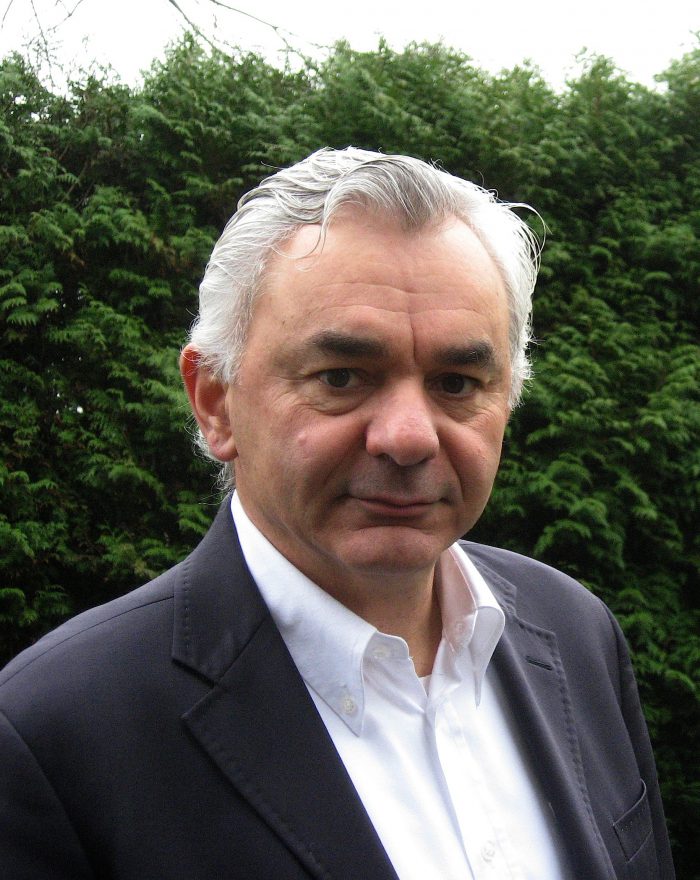
Luca Maresi,
MSc. Theor. Physics
>
Position: Lead Optical Engineer at ESA/ESTEC
Lecturing: Space for Creative Minds
Luca Maresi has thirty years of experience as Optical System Engineer for Space systems at Leonardo (Italy), Terma (Denmark), and ESA. He has worked on a number of large projects, such as Cassini, Rosetta, and Sentinel 5 Precursor. He has also initiated and managed groundbreaking projects, such as the Star Tracker 15AS at Terma, the Proba-V payload, and the HyperScout. In October 2013 he was appointed as Head of the Optics Section. Luca Maresi is the Chairman of the Symposium on Small Satellite Systems and Services since 2004. In 2016, together with Bernd Harnisch, he started the SOIDT.
cv
2021 – present: Lead Optical Engineer – Mechanical Dept. at ESA/ESTEC
2013 – 2021: Head of the Optics Section – Mechanical Dept. at ESA/ESTEC
2006 – 2013 Senior Optical System Engineer – Optics Section at ESA/ESTEC
2001 – 2006 Systems Engineer – Directorate of Industrial Matter and Technology at ESA/ESTEC
1996 – 2001 Senior Optical System Engineer – Space Division at Terma A/S – Denmark
1990 – 1996 Optical System Engineer – Space and Optics Division at Leonardo (formerly Officine Galileo) – Italy
1989 – 1990 System Engineer at Field Data – Italy
1989 Laurea in Physics – University of Milan
Space for Creative Minds – Luca Maresi
Space has been experiencing quite an acceleration in innovation thanks to small satellites and cubesat. These small spacecrafts require a different approach in technology development: their tight constraints on volume, cost and delivery time call for a creative approach. This is a novelty in Space, historically a performance driven environment. Problem solving and analytical approach has been dominating in the last decades. A new space approach that will bring unthinkable solutions is at his dawn, but it requires a different mindset: creativity instead of problem solving.
The shelves of bookstores are full with a wide variety of books on innovation. The pace of technology innovation in consumer products is breathtaking. High-tech start-up pops up every day, and established companies struggle to keep with the pace of technology evolution. What are the lessons that developments of new technologies in the consumer market can teach to ‘new space’ innovators?
For both small satellites, and large space infrastructures, even if done at difference level, the use of innovative concepts is always a trade-off between risks, delivery time and costs.
The first part of the lecture provides an introduction of the Innovation and Technology Management processes presenting study cases for the commercial market. The second part of the lecture focuses on the processes used in Space. Examples and real-life experience are presented. The lecture concludes with some considerations on how Innovation and Technology Management Processes shall be adapted in the to foster creativity in the current technology landscape in Space Optics.
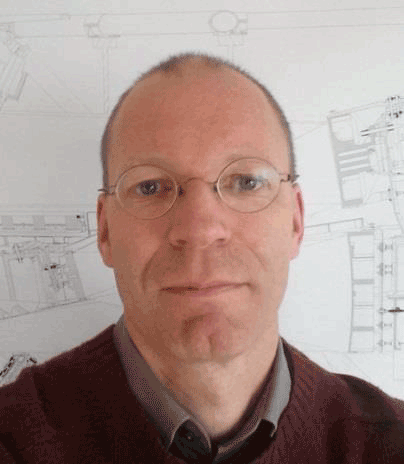
Volker Kirschner, MSc. Physics
>
Hands-on Activity
In the hands-on activity the participants will design, manufacture and test a telecentric lens. Starting from a set of requirements they will perform the optical and opto-mechanical design, they will manufacture and integrate the lens. Finally they will verify the achieved performances and give a short presentation of the achieved results.
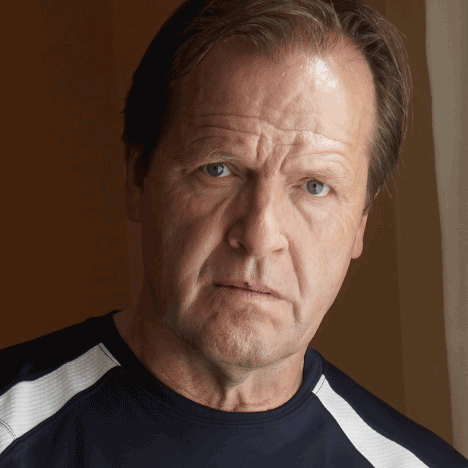
Bernd Harnisch,
PhD Physics
>
Position: SOIDT course academic programme manager
Lecturing: Spectrometer, Hands-on application
worked 23 years at the European Space Agency in the Optics section as optical engineer. During his career he was responsible for technology developments on telescopes, spectrometers and lightweight ceramic mirror materials. Further on he was supporting the following optical flight instruments: GOMOS on ENVISAT, MSG, GERB on MSG, NIRSpec for JWST, MIRI for JWST and SEOSAT.
cv
2015 – present SOIDT academic program responsible
1992 – 2015 ESTEC, optical engineer in the Optics section
1997 – 1992 Scientific Assistant in at Friedrich-Schiller University Jena
1985 – 1987 Academy of Sciences Jena
1981 – 1985 PhD in Holographic Interferometry at Friedrich-Schiller University Jena
1976 – 1981 study of Physics at Friedrich-Schiller University Jena
Hands-on Activity
In the hands-on activity the participants will design, manufacture and test a telecentric lens. Starting from a set of requirements they will perform the optical and opto-mechanical design, they will manufacture and integrate the lens. Finally they will verify the achieved performances and give a short presentation of the achieved results.